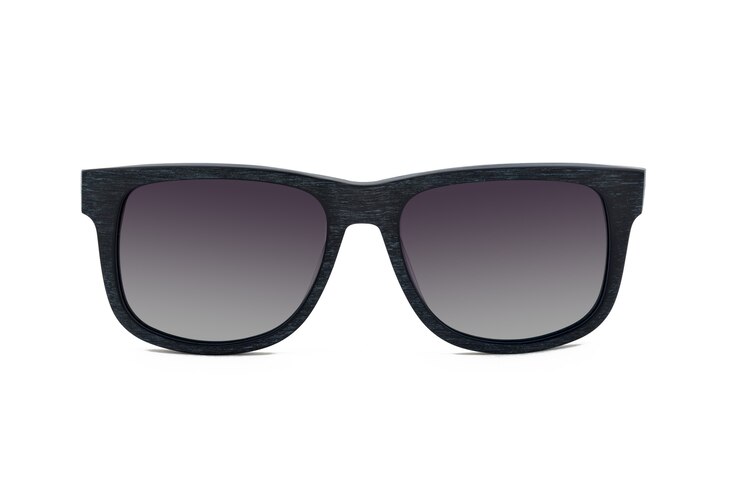From Aviators To Cat-Eyes: The Evolution Of Sunglasses And Their Iconic Designs
Even though we can choose from a wide variety of styles when shopping for sunglasses today, this was not always the case. Some styles were originally designed with certain functions in mind, such as safety and protection, whereas others were developed to give consumers more choices when it came to eyewear. The vast majority of styles increased in popularity when seen being worn by celebrities and public figures, showing the influence that they have on fashion trends.
Aviators
Aviator sunglasses were originally designed in the 1930s by Bausch & Lomb for pilots to wear to protect their eyes while flying. They replaced the previously used flight goggles, as they were much lighter and thinner. These glasses went on to be trademarked by Bausch & Lomb as ‘Ray Bans’, and were worn by many of the airmen in World War II. The victory of the Allied troops in the war had a large effect on popular culture, with the photograph of Douglas Macarthur wearing a pair of aviators increasing their popularity. The style arguably became more mainstream following them being worn by many celebrities, before being seen on Tom Cruise in Top Gun.
Cat Eye
Cat eye sunglasses were created by Altina Schinasi after she noticed the lack of stylish glasses for women available at the optician. They were inspired by the shape of the masks that she saw in Venice, and were firstly referred to as ‘harlequin’ frames. In the 1950s and 60s, the style of the frames often changed and increased in popularity after being worn by Marilyn Monroe and Audrey Hepburn in films.
Browline
Browline glasses first came around in the late 1940s when they were invented by Jack Rohrbach. They were originally designed so that the bridges, eye wires, and ‘brow’ were interchangeable, so the wearer could fully customize the size and fit of the glasses, as well as their color. The style quickly gained popularity because of this, leading other designers to release their own versions. Many public figures from the 20th century were pictured wearing browline glasses, such as Malcolm X and Colonel Sanders.
Round
The earliest round glasses were thought to be from around the 1200s-1300s. They were usually two lenses that would function as magnifying glasses and were connected together to sit on the bridge of your nose. It wasn’t until the 18th century that the temples of the face were considered in the design, adding arms to the frames so that they are more like the type of glasses we think of today. However, until the 1900s manufacturers did not mass-produce round sunglasses, and these were only simple, wire-framed styles. In the 1940s, consumers began purchasing sunglasses and they wanted more variety, leading manufacturers to introduce more creative styles, such as bolder frames or flower designs.
Wayfarer/Clubmaster
Wayfarer glasses were first designed in the 1950s by Raymond Stegeman, who was working for the parent company of Ray-Ban at the time. They were popular after their introduction, but interest and sales both declined after the 1950s and 1960s. The 1980 film The Blues Brothers did help to revive sales by a small amount, but not enough to save this style from being considered for discontinuation.
In 1982, Ray-Ban signed a product placement deal to have their sunglasses appear in several films and TV shows a year. This deal was a success, as the glasses appeared in 60 shows a year between 1982 and 1987, with one of the key product placements being the Wayfarer glasses worn by Tom Cruise in 1983’s Risky Business. Other placements that increased the popularity of Wayfarers once again included Miami Vice and The Breakfast Club. Public figures and celebrities also began to be pictured wearing Wayfarer sunglasses, such as Anna Wintour, Madonna, and Jack Nicholson, with author Bret Easton Ellis often referencing the style in his work.
Sadly, the style became unpopular again in the 1990s due to competition from other popular styles, such as wraparound sunglasses. However, when celebrities were photographed wearing vintage Wayfarers in the early 2000s and the same sunglasses were selling for high prices on auction sites, Ray-Ban reintroduced the original design to the market.

Wraparound
It could be said that the snow goggles used by the Inuits hundreds of years ago are the first ‘wraparound’ sunglasses, but the more familiar, modern style evolved from aviators in the 1960s. These designs were a result of necessity and safety, as individuals riding motorcycles or scooters love to wear them. Slowly, it has become a way of keeping debris out of their eyes, and are less bulky and more comfortable than goggles.
During the 1980s, wraparound sunglasses became popular for participants in sports like motocross, skiing and cycling due to their function as well as style. They became trendy late last year in 2022 after designers often sent them down the catwalk and celebrities such as Kim Kardashian, Kaia Gerber, Rihanna, and Justin Bieber were spotted wearing them.
Heart
Less conventionally shaped lenses began to take off during the 1950s, including heart-shaped sunglasses. However, they did not become popular in their own right until the release of Lolita in 1962, with much of the film’s advertising featuring images of Sue Lyon wearing a bright red pair as the titular character. After this, many brands started to mass-produce frames in this style, and they also became iconographic of the hippy/flower power fashion movement. Many musicians of this period would also wear them, such as George Harrison and Elton John.
Oversized
Oversized sunglasses supposedly first became popular in the 1960s, and were the favorite of most Hollywood stars. The glasses would provide them with a shield from the paparazzi, as well as create a sense of mystery and allure for their fans. This particular style of glasses offers increased protection from the sun due to their size. Moreover, they are versatile enough to match any kind of outfit. Similarly to wraparound sunglasses, they are popular among athletes competing in sports such as skiing and beach volleyball as they offer sun protection and improve their visibility.
Read Also:








